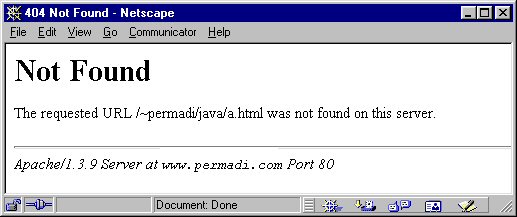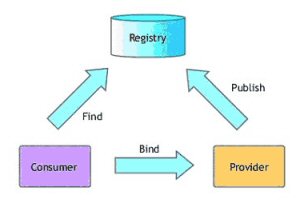SOAP: Simple Object Access Protocol - Explanation
 SOAP (Simple Object Access Protocol) is a simple and light protocol for the
exchange of information. SOAP differs from RMI, CORBA and COM because it
concentrates the information and uses the principle of self-describing data.
SOAP is part of the communication layer of Web Services. The strength of this
protocol lies in its universality and flexibility. It defines the structure of
XML messages used by applications to communicate with each other. SOAP appears
as the centerpiece among all the protocols mentioned. SOAP is very complex if we
wanted to detail all the specifics. We will only discuss the most used. SOAP (Simple Object Access Protocol) is a simple and light protocol for the
exchange of information. SOAP differs from RMI, CORBA and COM because it
concentrates the information and uses the principle of self-describing data.
SOAP is part of the communication layer of Web Services. The strength of this
protocol lies in its universality and flexibility. It defines the structure of
XML messages used by applications to communicate with each other. SOAP appears
as the centerpiece among all the protocols mentioned. SOAP is very complex if we
wanted to detail all the specifics. We will only discuss the most used.
RPC and SOAP protocols
SOAP is one of the object-oriented communication protocols, taking the
traditional principles of RPC (Remote Procedure Call) of the previous protocols,
except that RPC defined by SOAP can solve certain problems raised by
technologies such as CORBA or DCOM for distributed applications over the
internet. Indeed, the RPC is often difficult to implement, and exchanged
messages do not pass the firewall. In addition, they are not adapted to the
needs of distributed applications on the Internet, where the only requirement
should be to use the http protocol (in order to cross the firewall)
applications. This is the aim of the SOAP standard, which has a policy of
exchanging HTTP messages (or SMTP) whose body is an XML file. SOAP is based on
XML-RPC specification. SOAP does not therefore disrupt the architecture of
communication possibly existing in network of the company. Rather, the
approximation of principles of SOAP from those of other RPC facilitates the
integration of different protocols and provides an excellent interoperability at
a low cost at the junction of the intranet and the Internet.
Generalities
 Communication with Web Services is through the SOAP protocol. The SOAP
specification highlights HTTP (rather than other transport protocols such as
SMTP, FTP, POP3 and NNTP) as the preferred transport protocol of SOAP messages.
Early versions of SOAP are mainly interested in the PRC through the Web, from
where the primary purpose of SOAP: the RPC over HTTP. The arrival of new actors
like IBM in the group of SOAP specification led to enrich SOAP ambition - and we
saw a first demonstration of SOAP over SMTP, for example. SOAP can be used: Communication with Web Services is through the SOAP protocol. The SOAP
specification highlights HTTP (rather than other transport protocols such as
SMTP, FTP, POP3 and NNTP) as the preferred transport protocol of SOAP messages.
Early versions of SOAP are mainly interested in the PRC through the Web, from
where the primary purpose of SOAP: the RPC over HTTP. The arrival of new actors
like IBM in the group of SOAP specification led to enrich SOAP ambition - and we
saw a first demonstration of SOAP over SMTP, for example. SOAP can be used:
- for calling methods (SOAP RPC)
- to exchange messages (SOAP Messaging) SOAP
defines the primary structure of the message, called "envelope", which contains
two parts:
- the header (Header): Optional
- the body (Body): required
SOAP also defines the encoding for different types of data which is based on
the W3C XML Schema technology. The data can be (integer string, float, ...)
simple or compound.
SOAP messages SOAP governs data format at the time of sending / receiving. We
name the traffic in several different types:
All SOAP messages contained in XML document are called envelopes that are
containers of a SOAP message. An envelope is the first element in XML document
that represents a SOAP message. It is this principle of neutrality that allows
mobility of Web Services technology. The envelope being formatted according to
the specifications of SOAP, the sender and the consumer can totally be written
on different platforms without any problem.
HTTP requests
HTTP requests are to have a methodology request, a request URL that specifies
the headers and the body of the stream sent. SOAP messages are transmitted
through HTTP and allow full interoperability between clients and Web Services.
When sending an HTTP request, the header field must be set to "SOAPAction:" so
that the message be treated as a SOAP message.
- GET - returns the resource identified by the request.
- HEAD - returns the header identified by the request.
- POST - sends values without size limit to the server.
- PUT - stores a resource for the query.
- DELETE - delete the resource identified by the request.
- OPTIONS - returns HTTP methods supported by the server.
- TRACE - returns the contents of the headers used with the TRACE option.
HTTP 1.0 includes only the GET, HEAD, and POST methods. Although J2EE servers
require only HTTP version 1.0, many servers support the HTTP version 1.1.
POST / HTTP/1.0 LocalWeather1
Host: www.mystream.com
Content-Type: text / xml; charset = "utf-8"
Content-Length: 300
SOAPAction: "WeatherStation1"
<SOAP-ENV: Envelope
xmlns: SOAP-ENV = "//schemas.xmlsoap.org/soap/envelope/"
SOAP-ENV: encodingStyle = "//schemas.xmlsoap.org/soap/encoding/"> <SOAP-ENV:Body>
<m:GetCurrentTemperature1 xmlns:m="WeatherStation1">
<m:scale> Celsius </ m: scale>
</ m: GetCurrentTemperature1>
</ SOAP-ENV: Body>
</ SOAP-ENV: Envelope>
HTTP responses
HTTP responses using the same process.
An HTTP response contains:

- the result code
- the header
- the body Here are some errors identified by a specific number on the
HTTP protocol:
- 404 - indicates that the requested resource is unavailable.
- 401 - indicates that the request requires HTTP authentication.
- 500 - indicates an internal error in the HTTP server.
- 503 - indicates that the server is overloaded.
HTTP/1.0 200 OK
Content-Type: text / xml; charset = "utf-8"
Content-Length: 307
<SOAP-ENV: Envelope
xmlns: SOAP-ENV = "//schemas.xmlsoap.org/soap/envelope/"
SOAP-ENV: encodingStyle = "//schemas.xmlsoap.org/soap/encoding/">
<SOAP-ENV:Body>
<m:GetCurrentTemperatureResponse1 xmlns:m="WeatherStation">
<m:temperature1> 22.2 </ m: temperature1>
</ m: GetCurrentTemperatureResponse1>
</ SOAP-ENV: Body>
</ SOAP-ENV: Envelope>
For the reliability of the transmitted data, IBM has established a standard:
HTTPR (HTTP Reliable). This standard must ensure reliable sending or receiving
SOAP messages.
Namespaces
It is important to understand XML namespaces in order to understand SOAP.
<m:GetCurrentTemperature1 xmlns:m="WeatherStation1">
<m:scale> Celsius </ m: scale>
</ m: GetCurrentTemperature1>
 Analyze the XML stream above, XML allows you to create variable names similar
to a programming language. Here the identifier of the namespace is called "m"
and this variable contains "WeatherStation1" as namespace. This principle is
widely used in variable description files of data. We have an example, ‘m:
GetCurrentTemperature1’ allow to identify directly the namespace with the
identifier "m". Analyze the XML stream above, XML allows you to create variable names similar
to a programming language. Here the identifier of the namespace is called "m"
and this variable contains "WeatherStation1" as namespace. This principle is
widely used in variable description files of data. We have an example, ‘m:
GetCurrentTemperature1’ allow to identify directly the namespace with the
identifier "m".
However, XML supports the namespaces by default, so you may encounter flow as
that one.
<GetCurrentTemperature1 xmlns="WeatherStation1">
<scale> Celsius </ scale>
</ GetCurrentTemperature1>
SOAP RPC
 The RPCs have existed for a long time. Technologies such as CORBA, DCOM or RMI
provide the opportunity to develop very simple distributed architectures. Web
Services show the principle based on XML. Current implementation of Web Services
provides two technologies of Remote Procedure Call (RPC): SOAP-RPC and XML-RPC
SOAP-RPC: based on SOAP messages that we know. XML-RPC: offers a lighter and
easier library to implement than if we use SOAP. Apache offers a quality library
on the site. The RPCs have existed for a long time. Technologies such as CORBA, DCOM or RMI
provide the opportunity to develop very simple distributed architectures. Web
Services show the principle based on XML. Current implementation of Web Services
provides two technologies of Remote Procedure Call (RPC): SOAP-RPC and XML-RPC
SOAP-RPC: based on SOAP messages that we know. XML-RPC: offers a lighter and
easier library to implement than if we use SOAP. Apache offers a quality library
on the site.
A SOAP service is an application whose methods are accessible through SOAP.
This service can be developed in any programming language. A service is accessed
through a unique identifier of type URN . In Java ,any class can be made
accessible through SOAP (using Apache SOAP). When calling a method on the
deployed service, it is the corresponding method of the Java class that is
executed.
The following example is a Java class that we want to make accessible
through SOAP with id "URN: Echo1"
public class Echo1 {
public String echo1 (String expression) {
return "Message received:" + expression;
}
}
Request / response SOAP:
To call the operation "echo1", the identifier of the remote object is specified
in the SOAP Body of the request, the operation to be performed and any
parameters:
Details of the request:
- <m:echo1 xmlns:m="urn:Echo1">:the defined namespace has the service
identifier as URN ("urn: Echo1"). The name of the element (echo1) is the
name of the method to execute;
- The call parameters of the method are then added one after the other.
Here there is only one parameter: "expression" of type string.
SOAP-ENV: Body>
<m:echo1 xmlns: m = "urn:Echo1">
<expression type= "xsd:string">
Hello World
</ expression >
</ m: echo1>
<SOAP-ENV: Body>
After calling echo1 method, A SOAP message is then sent to the SOAP service.
The service executes the method specified in the request and then returns a SOAP
message whose Body contains the result of the operation:
The result is contained in a <return> element:
- The type attribute specifies the return type of the method executed.
- The content of the element is the result of the execution of the method.
<SOAP-ENV: Body>
<m: echo1 xmlns: m = "urn: Echo1">
<return type="string">
message received: Hello World
</ return>
</ m: echo1>
</ SOAP-ENV: Body>
Programming
Introduction to Java EE (Part 1)
How the Google App Engine Works
WSDL - Web Service Description Language
SOAP: Simple Object Access Protocol
Initiation to Cryptography and Encryption to Secure Data
Introduction to Design Patterns in Java
How To Write Efficient Programs in Java
Proper Management of Logs in .Net
How To Remove FaceBook Action Ids From URL |